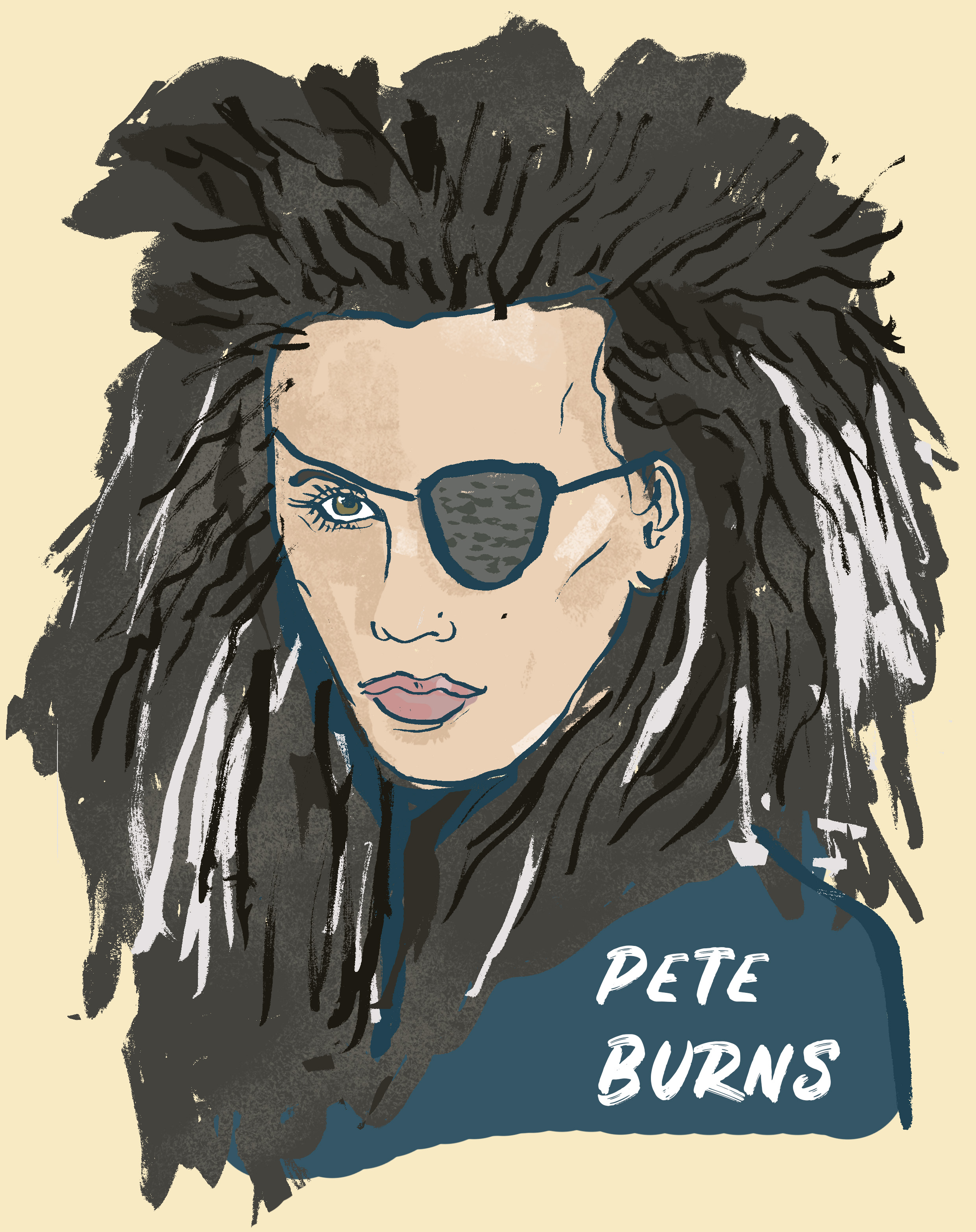Pete Burns by Rhyannon Styles
Illustration by Elena Durey.
Rhyannon Styles is a columnist, author, performer and model. 'Stand Up Stand Out' is a new beauty campaign launched by The Body Shop, in collaboration with Rhyannon. In June 2017 Rhyannon released her memoir, 'The New Girl - A Trans Girl Tells It Like It Is'. Rhyannon Styles was the UK's first transgender columnist - beginning in September 2015, her column 'The New Girl' featured regularly in ELLE online, in the magazine and has been translated to print in China. In 2015 Rhyannon was name checked by the Independent's Rainbow List as one of Britains most influential LGBTQI+ people. Rhyannon continues to expand minds around transgender issues, promoting awareness using her media platform.
During the 1980s Pete Burns and his musical contemporaries pushed the boundaries of gender identity, sexuality - and you could argue taste – through their styling and performing. Proudly welding punky drag, transvestism and glam rock into an intoxicating marketable package. The likes of Marc Almond, Boy George, Lana Pillay, Sylvester and Marilyn all expressed feminine attributes and attire - despite all being born men.
They lip-synced, pranced about and strutted around on Top of the Pops like no-one had done before, beaming loud, bright and queer into the living rooms of suburban homes across the UK, causing many a dad to shout ‘bloody woofters’ whenever they appeared dressed in their finest garb. On stage they presented flamboyant versions of themselves, blurring gender with a distinctive disco beat, embracing what Bowie had started several years earlier with Ziggy Stardust and pushing it to the extreme. This heady mixture of new romantic, hi-NRG disco catapulted Burns into the spotlight for the duration of the 80s.
I think it’s one of the most culturally significant and interesting periods of British music, often beyond what its given credit for. Burns and his cohorts were queer outsiders, night club aficionados and desperate attention seekers. Their collective cavorting allowed them to infiltrate mainstream culture - racking up No1 hits, corporate advertising deals and international stadium tours. Their power was pop, and it spoke to girls and girly boys who adorned their bedroom walls with Smash Hits posters of their idols, desperate to date them, or longing to be them.
I was hooked on Dead or Alive and their chart topping anthem ‘You Spin Me Round (Like A Record)’ and loved watching the video whenever it played on VH1 in the 90s. I remember twirling around my front room, and singing along with a person dressed in purple silk, wondering who he was and where he might be now. Back then nobody had the internet or a google search engine, so Pete Burns and his tribe of queer misfits remained somewhat of a mystery to me for many years.
It was through my local music library that I began to discover their back catalogues, absorbing everything I heard and pouring over record art work. I was a young boy coming to terms with being effeminate, queer and trans who desperately wanted to escape the chastity of my small village life and find my own place in queer culture just like they had done. Through Pete’s femme presentation I was able to begin piecing together my own queer identity, and an idea of what my future might look like.
When the 80s revival came back around in the 00s, the likes of Pete Burns and Boy George popped up on TV and down the disco. During the mid 00s a new scene emerged in London’s nightclubs and club-kids once again haunted the dark, sweaty club circuit. There was a nod to the 80s in this post millennial, electro clashing chutzpah and legendary clubs such as Blitz, Taboo and Kinky Gerlinky were often referenced in people’s outfits and attitude. Club nights; Kashpoint, Electrogogo and TrannyShack reintroduced Burns and his music to a new audience of club-kids who wobbled on ketamine whilst throwing shapes on the dance floor. I was one of several prominent kids desperate for attention, demanding VIP status and willing to leave the house wearing several rubber rings around my legs and an IKEA storage container on my head searching for a queer utopia. Whilst I never encountered Burns at any club night, I avidly watched for him and scoured the pages of scene magazines QX and BOYZ to see where he’d been.
In 2006 Burn’s became a contestant on channel Four’s Celebrity Big Brother. The self-proclaimed ‘Venus with a penis’ reissued his bands top hit and dominated the British press.
The media focused on his extensive cosmetic surgery and bitchy quips, this exposure eclipsed his original fame and Pete Burns once again skewed people’s perceptions of image, gender, sexuality and queerness more than ever before.
Pete always declared that he had no desire of transitioning physically to become a woman, but he felt it was necessary to explore his own version of femininity. I was in awe of Pete’s astute confidence in his own sense of self, and his beautifully exaggerated appearance. Through his fluid presentation he challenged pre conceived notions of male, female, gay, straight and used cosmetic surgery to create new a new form, proving that the binary systems needn’t apply to everyone.
Throughout his life Burns remained the outsider, was often misunderstood and continued to provide fodder for gossip magazines. I think he always remained true to his ideas and knew instinctively who he was. His strength was his otherness and his appearance a method for translating new ideas. His queer credentials allowed me to flourish and many more like me to find their own place in a very hetero-dominant society. He will always be remembered.
Illustrator Elena Durey is an queer Irish illustrator, currently studying BA (Hons) Illustration in sunny Falmouth and would like to meet your dog.


